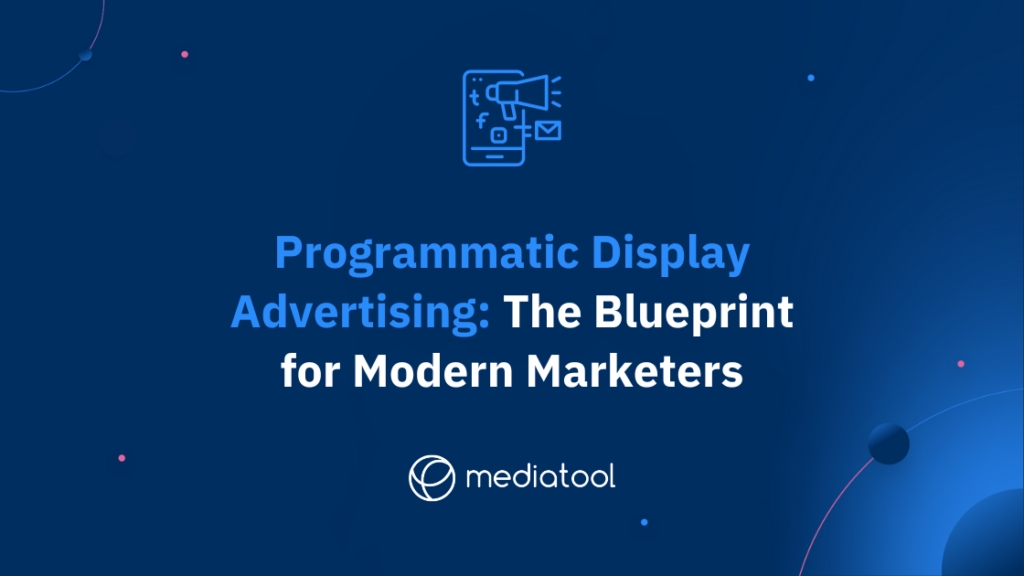How to Maximize the Benefits of Targeted Advertising with Digital Advertising Networks
Buy CPC Traffic | Buy Display Ads | Exclusive traffic sources | Buy Push Ads | Popunder ADS | Buy Native Ads | Buy Preroll Ads
Buy CPC Traffic | Buy Display Ads | Exclusive traffic sources | Buy Push Ads | Popunder ADS | Buy Native Ads | Buy Preroll Ads
In today's digital age, targeted advertising has become an essential tool for businesses looking to reach their ideal customers and maximize their marketing efforts. By harnessing the power of digital advertising networks, companies can create highly tailored campaigns that deliver relevant messages to the right audience at the right time. This level of precision and personalization has revolutionized the way businesses approach advertising, allowing them to unlock the full potential of their marketing strategies.
One of the key advantages of targeted advertising is the ability to reach specific segments of the population with tailored messages. Through the use of data analytics and consumer insights, businesses can identify the characteristics, preferences, and behaviors of their target audience. Armed with this information, they can create highly personalized campaigns that speak directly to the interests and needs of their customers.
By leveraging digital advertising networks, companies can also take advantage of the vast reach and scale of these platforms. With the ability to target audiences across multiple channels and devices, businesses can ensure that their messages are seen by the right people, regardless of their location or browsing habits. This level of reach and agility allows businesses to maximize their advertising budget and optimize their return on investment.
In addition to precise targeting and wide reach, digital advertising networks offer advanced optimization tools that can help businesses refine their campaigns and achieve better results over time. Through continuous monitoring and analysis of campaign performance, companies can identify areas for improvement and make real-time adjustments. This iterative approach allows businesses to adapt their advertising strategies to the ever-changing needs and preferences of their target audience, ultimately driving better engagement and conversion rates.
In conclusion, the potential of targeted advertising is vast, and by harnessing the power of digital advertising networks, businesses can unlock a new realm of possibilities. With the ability to reach specific segments of the population, leverage wide reach and scale, and continuously optimize campaigns, businesses can maximize the impact and effectiveness of their marketing efforts. In this era of digital innovation, targeted advertising is a game-changer that can propel businesses forward and help them stay ahead of the competition.
The Advantages of Targeted Advertising

Targeted advertising allows businesses and marketers to reach specific audiences based on their demographics, interests, and online behavior. This approach offers several key advantages:
Increased Relevance
Targeted ads are more relevant to users, as they are tailored to their specific interests and needs. This relevance improves the chances of users engaging with the ad and taking the desired action, such as making a purchase or signing up for a service.
Higher ROI
By reaching the right audience, targeted advertising can significantly improve return on investment (ROI). Instead of wasting resources on irrelevant impressions, businesses can focus their budget on reaching potential customers who are more likely to convert.
Improved Customer Experience
Targeted ads provide a better user experience by showing relevant and personalized content. Instead of bombarding users with generic ads, businesses can deliver messages that resonate with their specific needs, creating a more positive and engaging experience.
Better campaign performance
Targeted advertising allows businesses to track and measure their campaigns more effectively. By collecting data on user interactions and conversions, marketers can optimize their ads and make data-driven decisions, leading to improved campaign performance and results.
Increased Brand Awareness
Targeted advertising can help businesses increase their brand awareness among their target audience. By consistently delivering relevant ads to the right people, businesses can build brand recognition and establish themselves as a trusted and preferred choice in their industry.
Cost-effectiveness
Targeted advertising can be more cost-effective compared to traditional forms of advertising. By precisely targeting specific audiences, businesses can minimize wasted spending on irrelevant impressions and focus resources on reaching potential customers who are more likely to convert, maximizing their ad spend.
Overall, targeted advertising offers numerous advantages that can significantly enhance the effectiveness of digital ad campaigns, providing businesses with the opportunity to reach the right audience, improve ROI, and build stronger relationships with their customers.
Understanding the Power of Digital Advertising Networks
As the world becomes increasingly digital, the advertising landscape has transformed dramatically. Traditional forms of advertising, such as billboards and print ads, now share space with targeted digital advertising networks. These networks have revolutionized the way businesses reach their target audiences, presenting new opportunities and challenges.
What are Digital Advertising Networks?
Digital advertising networks are platforms that connect advertisers with publishers. They utilize sophisticated algorithms and data analytics to deliver targeted ads to specific audiences. These networks can span across various channels, including websites, social media platforms, mobile apps, and video streaming services.
With digital advertising networks, businesses have the capacity to reach potential customers wherever they are online. These networks offer a wide range of targeting options, such as demographics, behavior, interests, and location, enabling advertisers to create highly personalized and relevant campaigns.
The Benefits of Digital Advertising Networks
One of the primary advantages of using digital advertising networks is their ability to reach a massive audience. These networks have access to vast pools of users, providing businesses with unparalleled reach and visibility. Additionally, digital advertising networks offer real-time tracking and analytics, allowing advertisers to measure the effectiveness of their campaigns and make data-driven optimizations.
Moreover, digital advertising networks offer greater flexibility and control over ad placements. Advertisers can choose specific websites or platforms to display their ads, ensuring that they reach their desired audience. This level of precision targeting can lead to higher engagement rates, conversions, and ultimately, increased return on investment (ROI).
Furthermore, digital advertising networks allow businesses of all sizes to participate in targeted advertising. Unlike traditional media channels that require significant upfront investments, digital advertising networks provide options for businesses with various budget levels. This democratization of advertising has expanded opportunities for smaller businesses to compete with larger corporations.
In conclusion, digital advertising networks have revolutionized the advertising industry, offering businesses unprecedented reach, flexibility, and control over their campaigns. These networks provide a powerful way to connect with audiences and deliver highly targeted ads, ultimately unlocking the full potential of targeted advertising in the digital age.
The Benefits of Targeted Advertising
Targeted advertising is revolutionizing the way companies reach and engage with their audiences. By utilizing advanced technology and data analysis, advertisers can now deliver highly personalized content to specific individuals or groups, resulting in a more effective and efficient marketing strategy. So, what are the benefits of this approach?
1. Increased Relevance: With targeted advertising, brands can tailor their messages and content to resonate with the interests, preferences, and demographics of their target audience. By delivering relevant and personalized ads, companies can capture the attention of potential customers who are more likely to engage with their brand or make a purchase.
2. Higher Conversion Rates: By focusing on specific segments of the population who are already interested in a particular product or service, targeted advertising can significantly increase conversion rates. Instead of wasting resources on a broad, general audience, advertisers can allocate their budget towards reaching individuals who are more likely to convert into customers.
3. Cost-Effectiveness: Targeted advertising allows companies to optimize their advertising spend by delivering ads only to those who are most likely to respond positively. This targeted approach eliminates wasted impressions on individuals who are not interested in the product or are not part of the target market. As a result, companies can allocate their budget more efficiently and achieve a higher return on investment.
4. Enhanced User Experience: Personalized ads that cater to the specific needs and interests of individuals can greatly enhance the user experience. By delivering relevant content, advertisers can provide users with valuable information and offers that are more likely to resonate with them. This not only improves user satisfaction but also strengthens the relationship between the brand and the consumer.
5. Real-Time Bidding: Real-time bidding (RTB) advertising, enabled by digital advertising networks such as rtb advertising, allows advertisers to bid on ad impressions in real-time, ensuring that the right ad is displayed to the right user at the right time. This dynamic and data-driven approach enhances the effectiveness of targeted advertising campaigns, maximizing the chances of reaching the intended audience and achieving desired outcomes.
In summary, targeted advertising offers numerous benefits for advertisers, including increased relevance, higher conversion rates, cost-effectiveness, enhanced user experience, and the ability to leverage real-time bidding. With the power of digital advertising networks, advertisers can unlock the full potential of targeted advertising, reaching their ideal audience with precision and maximizing the impact of their marketing efforts.
Maximizing ROI with Targeted Advertising
Targeted advertising has revolutionized the way businesses reach their customers. By tailoring ads to specific demographics, interests, and behaviors, businesses can significantly improve their return on investment (ROI). Here are a few ways to maximize ROI with targeted advertising:
Identify the target audience: Before launching a targeted advertising campaign, it is crucial to identify the target audience accurately. Understanding who your ideal customers are and what their preferences and needs are will help you create personalized ads that resonate with them.
Create compelling ad content: Once you have identified your target audience, focus on creating compelling ad content that speaks directly to them. Use language, images, and messaging that will grab their attention and prompt them to take action. By crafting ads that are relevant and engaging, you can increase the likelihood of conversions.
Utilize data analytics: One of the significant advantages of targeted advertising is the ability to collect and analyze data. Take advantage of data analytics tools to track the performance of your ads, measure key metrics such as click-through rates and conversions, and make data-driven optimization decisions. Data analytics can help you identify what works and what doesn't, allowing you to refine your ads for maximum ROI.
Optimize targeting parameters: As you analyze the data, you may discover new insights about your target audience. Use these insights to refine your targeting parameters further. Adjusting factors such as age, location, and interests can help you reach an even more specific audience, maximizing your chances of conversion and improving your ROI.
Monitor and adjust: Targeted advertising is not a one-time setup and forget it strategy. It requires continuous monitoring and adjustment to stay relevant and effective. Regularly analyze the performance of your ads, keep an eye on industry trends, and make necessary adjustments to optimize your campaigns. A proactive approach to monitoring and adjustment will ensure that you are always getting the most out of your targeted advertising efforts.
By following these strategies, businesses can harness the power of targeted advertising to maximize their ROI. With the ability to precisely reach the right audience and continuously optimize campaigns, targeted advertising is a valuable tool for driving success in the digital advertising landscape.
How to Create an Effective Targeted Advertising Campaign
Creating an effective targeted advertising campaign is essential for businesses who want to reach and engage with their ideal customers. By tailoring your advertisements to a specific audience, you can increase the likelihood of converting leads into customers and maximizing the return on your advertising investment. Here are some key steps to help you create an effective targeted advertising campaign:
1. Define Your Target Audience

The first step in creating a targeted advertising campaign is to define your target audience. This includes identifying the demographic, geographic, and psychographic characteristics of your ideal customers. By understanding who your audience is, you can tailor your advertising message and select the most relevant advertising channels to reach them.
2. Conduct Market Research

To effectively target your audience, it's important to conduct market research to gain insights into their behaviors, preferences, and needs. This can include analyzing customer data, conducting surveys, or using tools and platforms that provide audience insights. The more you understand your target audience, the better you can create advertising messages that resonate with them.
3. Set Clear Goals
Before launching a targeted advertising campaign, it's important to set clear goals. Determine what you want to achieve with your campaign, whether it's increasing brand awareness, driving website traffic, generating leads, or boosting sales. Setting clear goals will help you measure the success of your campaign and make necessary adjustments along the way.
4. Choose the Right Advertising Channels
Selecting the right advertising channels is crucial to reach your target audience effectively. Consider where your audience spends their time online and which platforms or networks will best help you reach them. This could include search engine advertising, social media advertising, display advertising, or email marketing. By selecting the right channels, you can optimize your reach and engagement with your target audience.
5. Craft Compelling Advertisements
Once you have determined your target audience and selected your advertising channels, it's time to create compelling advertisements. Your ads should grab attention, clearly communicate your message, and provide a strong call to action. Use creative elements such as images, videos, or interactive elements to make your ads engaging and memorable.
6. Monitor and Optimize
Once your targeted advertising campaign is live, it's important to monitor its performance and optimize it as needed. Track key metrics such as impressions, click-through rates, conversions, and return on ad spend. Use this data to identify areas for improvement and make adjustments to your targeting, messaging, or advertising channels to maximize your campaign's effectiveness.
By following these steps, you can create an effective targeted advertising campaign that reaches and engages your ideal customers, driving business growth and success.
Harnessing Data for Targeted Advertising Success
Data has become the driving force behind successful targeted advertising campaigns. By collecting and analyzing data from various sources, advertisers can gain valuable insights into consumer behavior and preferences, allowing them to deliver personalized and relevant ads to their target audience.
One of the key advantages of harnessing data for targeted advertising is the ability to create highly specific customer segments. By segmenting customers based on factors such as demographics, interests, and past purchase behavior, advertisers can tailor their messages to better resonate with each segment. This level of personalization not only improves the effectiveness of the ads but also enhances the overall customer experience.
To effectively harness data for targeted advertising, advertisers need to leverage advanced technologies and tools. Data management platforms (DMPs) are instrumental in collecting, storing, and analyzing vast amounts of data from multiple sources. These platforms enable advertisers to create a comprehensive view of their target audience and make data-driven decisions to optimize their advertising campaigns.
In addition to DMPs, advertisers can also leverage customer relationship management (CRM) systems to capture and analyze customer data. By integrating CRM data with other data sources, advertisers can gain a holistic view of their customers and better understand their preferences and behavior patterns. This enables advertisers to deliver highly relevant and personalized ads across various channels and touchpoints.
1. Increased ad relevance and effectiveness
2. Enhanced customer experience
3. Improved ROI and ad performance
4. Better understanding of customer behavior and preferences
However, it is essential to ensure that data collection and usage comply with relevant privacy regulations and ethical standards. Advertisers must obtain explicit consent from customers and prioritize data security to build trust and maintain a positive brand image.
In conclusion, harnessing data is crucial for targeted advertising success. By leveraging data management platforms, CRM systems, and advanced analytics tools, advertisers can unlock the potential of targeted advertising and drive better results for their campaigns.
The Future of Targeted Advertising

Targeted advertising has come a long way in recent years, and its future looks even more promising. As technology continues to advance, advertisers will have more tools and resources at their disposal to create highly personalized and effective campaigns.
One key trend that will shape the future of targeted advertising is the increasing use of artificial intelligence (AI). AI algorithms can analyze huge amounts of data, allowing advertisers to gain deep insights into consumer behavior and preferences. This will enable them to deliver more relevant and personalized ads to their target audience, leading to a higher conversion rate.
Another important development is the rise of connected devices and the Internet of Things (IoT). With more and more devices becoming interconnected, advertisers will have access to a wealth of data on consumer habits and preferences. This data can be leveraged to deliver targeted ads at the right time and place, ensuring maximum impact and ROI.
Furthermore, the evolution of social media platforms and the growing popularity of influencer marketing will play a significant role in the future of targeted advertising. Advertisers will be able to leverage social media platforms to reach specific demographics and target niche markets. Moreover, collaborating with influencers who have a strong online presence and influence over their followers will help advertisers effectively reach their target audience.
Lastly, the future of targeted advertising will also be shaped by the growing focus on privacy and data protection. With increased awareness and regulations surrounding data privacy, advertisers will have to find ways to collect and use data in a transparent and ethical manner. Advertisers who prioritize privacy and respect consumer preferences will build trust and loyalty with their audience.
In conclusion, the future of targeted advertising looks promising with advancements in AI, the IoT, social media platforms, and a greater emphasis on privacy and data protection. By leveraging these technologies and strategies, advertisers will be able to create highly personalized and effective campaigns that resonate with their target audience, leading to improved ROI and customer engagement.
What is targeted advertising?
Targeted advertising is a form of advertising that uses consumer data and analytics to deliver personalized messages to a specific audience. It allows advertisers to reach their desired demographic with tailored content, increasing the effectiveness and efficiency of their campaigns.
How do digital advertising networks work?
Digital advertising networks act as intermediaries between advertisers and publishers. They connect advertisers who want to display their ads with publishers who have ad space on their websites or mobile apps. These networks use advanced algorithms and targeting technologies to match relevant ads with the right audience, maximizing the chances of engagement and conversions.
What are the benefits of targeted advertising?
Targeted advertising offers several benefits for both advertisers and consumers. For advertisers, it allows them to reach their ideal audience, improve campaign efficiency, and increase return on investment. Consumers benefit from targeted advertising by receiving ads that are more relevant to their interests and needs, making the overall advertising experience more personalized and useful.
What are the challenges of targeted advertising?
While targeted advertising has many advantages, it also faces challenges. One of the main challenges is privacy concerns. Collecting and using consumer data for targeted advertising raises ethical questions and can create a sense of intrusion. Advertisers need to ensure transparency and provide opt-out options to address these concerns. Another challenge is delivering truly personalized and accurate ads, as data can sometimes be incomplete or misleading.
How can advertisers make the most of digital advertising networks?
To make the most of digital advertising networks, advertisers should focus on understanding their target audience and refining their targeting strategies. They should analyze data to identify patterns and preferences, and use this information to create personalized and relevant content. Advertisers should also regularly monitor and optimize their campaigns, adjusting targeting parameters and creative elements based on performance data to maximize results.
What are digital advertising networks?
Digital advertising networks are platforms that connect advertisers with publishers, allowing them to reach a targeted audience through various digital channels.
How do digital advertising networks work?
Digital advertising networks work by aggregating ad space from publishers and matching it with advertisers' target audience and specifications. When a user visits a website or app within the network, relevant ads are served based on their demographics, interests, and browsing behavior.
What are the benefits of targeted advertising?
Targeted advertising allows advertisers to reach a specific audience that is more likely to be interested in their products or services, increasing the effectiveness and efficiency of their campaigns. It also provides a better user experience by showing ads that are relevant to the individual's interests and needs.
How can advertisers measure the success of their targeted advertising campaigns?
Advertisers can measure the success of their targeted advertising campaigns through various metrics such as click-through rates, conversion rates, impressions, and return on investment. They can also use tracking and analytics tools to gather data on user engagement and behavior to optimize their campaigns.
Buy CPC Traffic | Buy Display Ads | Exclusive traffic sources | Buy Push Ads | Popunder ADS | Buy Native Ads | Buy Preroll Ads
2022-2024 @ Unlocking the Potential of Targeted Advertising: Harnessing the Power of Digital Advertising Networks